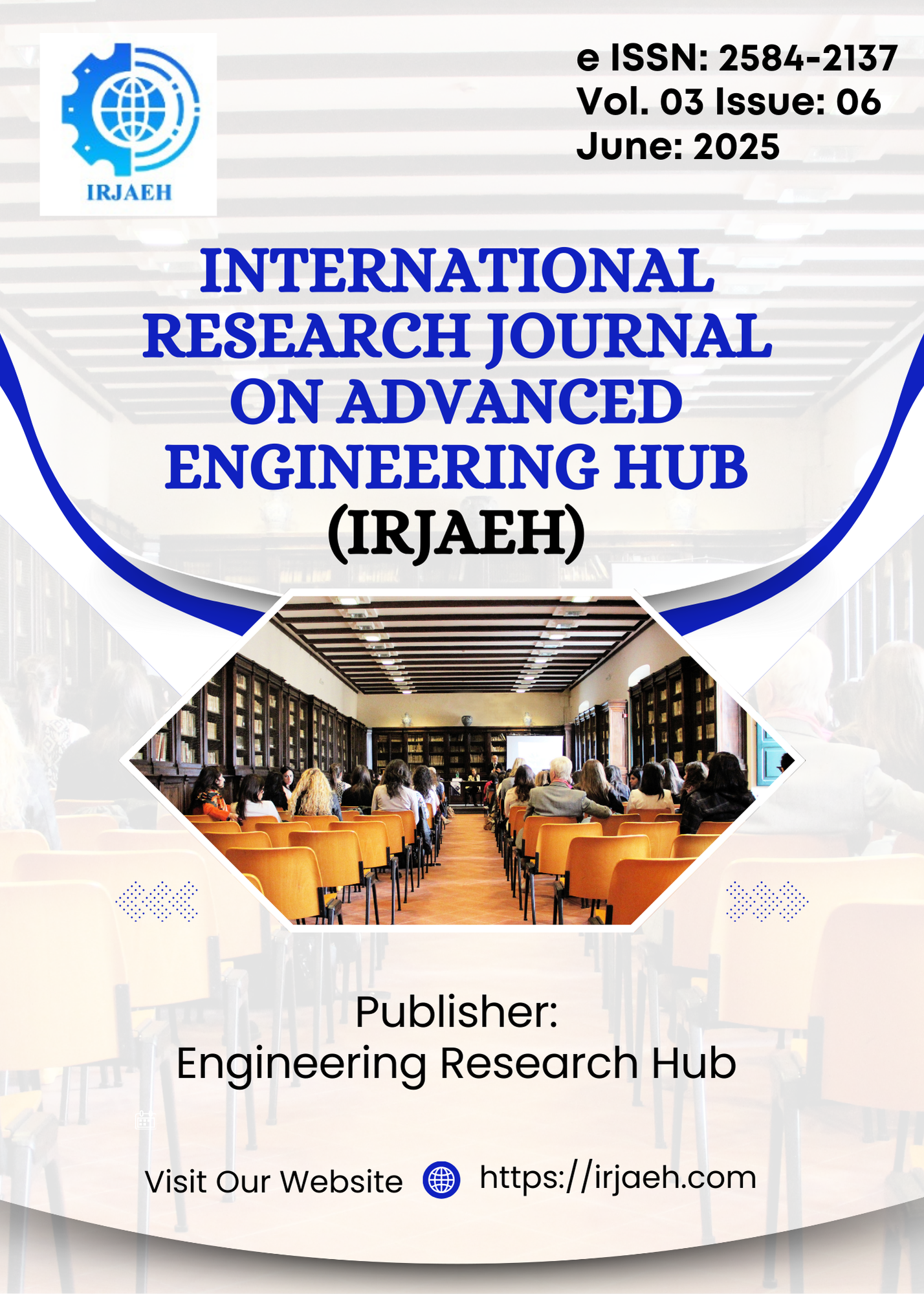Experimental and Analytical Computation of Forming Force, Major and Minor Strain and Its Validation by FEM in SPIF of UHMWPE
DOI:
https://doi.org/10.47392/IRJAEH.2025.0417Keywords:
FEM, Formability limit diagram, major & minor strain, DOEAbstract
Mass production is a fundamental requirement across various industries such as automotive, medical (e.g., artificial limbs), aerospace, and household appliances. Traditionally, this has been achieved through conventional metal forming processes like press work. However, for batch production scenarios, advanced and flexible manufacturing techniques such as Incremental Sheet Forming (ISF) are more suitable, as they can significantly reduce production costs. To optimize the ISF process, it is essential to study key process parameters, including step size, tool size, feed rate, spindle speed, and wall angle, as these factors directly influence formability and the deformation behavior particularly when working with Ultra High Molecular Weight Polyethylene (UHMWPE), which shows great potential in medical applications. This study aims to investigate critical aspects of the ISF process on UHMWPE, such as the forming limit diagram. It also involves a comparative analysis between experimental and analytical results using Finite Element Method (FEM), focusing major and minor strain values, and forming forces.
Downloads
Downloads
Published
Issue
Section
License
Copyright (c) 2025 International Research Journal on Advanced Engineering Hub (IRJAEH)

This work is licensed under a Creative Commons Attribution-NonCommercial 4.0 International License.

 .
. 